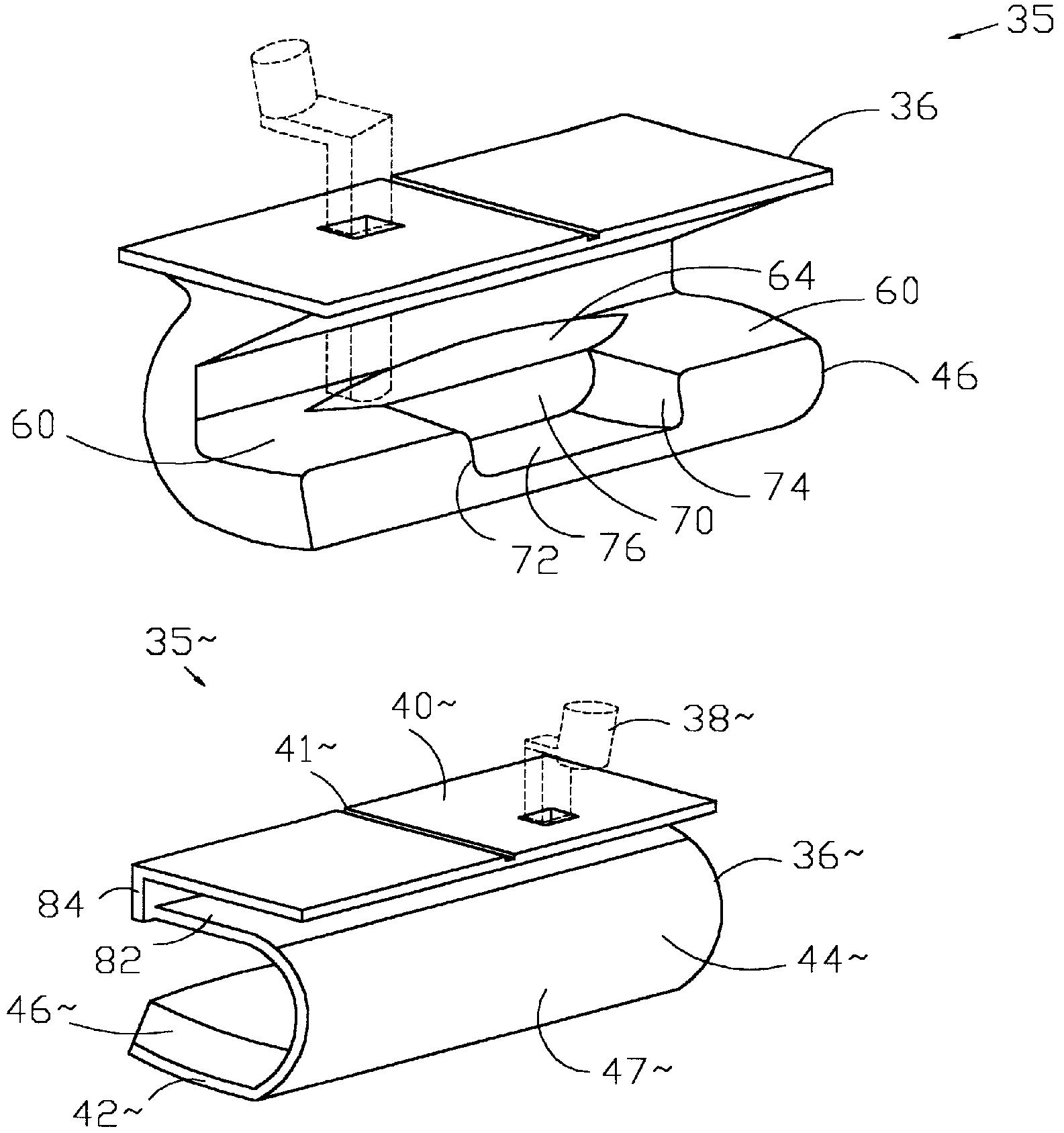Wrap Up of the Week of Wild Putter Designs
There are way too many wild putter designs to ever cover them all, but this week we have started to scratch the surface. As you have seen, most have some rational basis but take it to an often irrational extreme. In fact, at first blush many putter patents appear ridiculous, but if you really read them they make you scratch your head and wonder if there it something to it. This post’s putter is just one of those head scratchers. Check out the drawings, but then read the explanation before jumping to any conclusions.

The drawings come from USPN 6062987 titled “Planar Top Golf Putter,” which explains:
What do you think, any merit to this?
Dave Dawsey - The Putter Patent Lawyer
PS – Click HERE, HERE, HERE, and HERE to read additional posts from the “Week of Wild Putter Designs”

The drawings come from USPN 6062987 titled “Planar Top Golf Putter,” which explains:
The use of the present invention, as mentioned earlier is for a putting shot in the game of golf. A player would hold one end of the shaft (not shown in drawing figures) with a grip and the other end would be affixed to a club head. A player would "address" the golf ball and with a pendulum motion, swing the club head back and then forward making contact with the golf ball sending it on its directed trajectory towards the cup. The planar top portion of the club head is generally rectangle, providing a large area of straight edges to align the swing with the ball. Proper alignment during the "address" phase of the swing increases the players' chances of sinking the putt. The sighting groove in the planar top portion spans the width of the club head. A player can improve the club head alignment with the center of the ball and the sighted trajectory line to the cup with this longer sighting line. The planar top portion existing above the striking surface provides depth of perception on the striking edge and the edge of the golf ball. The striking face can not be seen, only the planar top and the golf ball to be struck. With the planar top above the ball covering the club head, the proportion of club head to golf ball has increased. This may create the advantage of less stroke required to propel the ball further, thereby adding additional control to the players putt. The curved striking surface that extends to the intersection of the bottom planar surface allows for a consistent striking edge throughout the height of the striking face. This consistency of shape affords the player the same contact surface, even if the players swing is slightly off center. The curvature of the striking surface creates a contact surface that will allow the struck ball to remain in contact with the ground, eliminating the "skip" or "skid" common to flat striking surfaces. Consistent roll after imparting the ball provides an additional level of consistency for ball trajectory. The core, located at the lower most point of the rear portion provides for "feel" on contact. As the golf ball is struck, the energy is transferred to the core. The uniqueness of the rounded surface directly above the core where the shaft is affixed to the club head allows this energy to be transferred to the shaft and thereby, to the players' hands.
Uniqueness of feel, which is one of the objectives of the present invention, refers not only to the club head when it is held, but also after impact with the ball. Impact "feel" comes as a function of memory. After a short practice session with the present invention, the unique feel will become apparent. Knowledge of this "feel" can build confidence, as the player will be aware of the impact feel required to sink a putt from various distances. Separating the heel and toe ends of the rear portion with a lowered planar surface allows for more material at the ends of the club head. The advantage of this separation is two-fold. More material at each end allows the club head of the present invention to be longer without moving the center of gravity to move off center. The second advantage of the separation is that the core is exposed. Exposing the core on the non-impact side allows the energy to move along the connected surface and to the shaft. The balance of the energy transferred would be into the "dead space" created by the cavity of the lower planar surface the two vertical separations of the rear portion. This contributes to the unique feel mentioned earlier. The bottom portion, having a radius of curvature along the longitudinal axis of the club head can reduce the possibility of "stubbing" the club if the players swing is slightly off. The perfect swing would have the bottom surface barely making contact with the ground surface, but not enough contact to cause resistance. If the players swing is less than perfect, the bottom surface of the present invention would not "stub" on the ground, but slide on top, thereby increasing the players chances making the putt with a less than perfect swing.
What do you think, any merit to this?
Dave Dawsey - The Putter Patent Lawyer
PS – Click HERE, HERE, HERE, and HERE to read additional posts from the “Week of Wild Putter Designs”

Comments